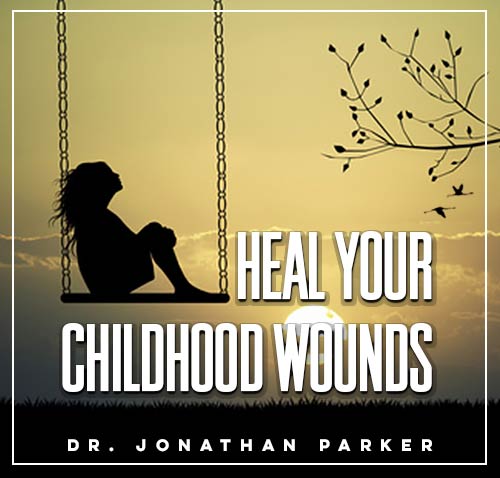Anxiety Release: Heal Inner Child Wounds

Hey there, amazing readers! 🖐️ Just a quick note: yes, we know there are a lot of ads here. Trust us, we get it—it’s not the prettiest look, but they help us keep this blog alive and kicking. Those pesky little ads cover the costs of all the behind-the-scenes magic, from hosting and tech stuff to creating content we hope you’ll love.
We’re committed to delivering quality posts, and your support (even just sticking around despite the ads) means everything to us. So, bear with us, and thanks for helping us keep the good vibes rolling. Now, on to the fun stuff! 😉
TRANSLATE BUTTON AT THE END OF THE ARTICLE
A Quick Overview
Healing inner child wounds is a vital part of managing anxiety and finding emotional well-being.
Our inner child represents the emotional experiences and beliefs we formed during our childhood.
When these experiences are traumatic or negative, they can create deep wounds that impact our mental and emotional health as adults.
By understanding and addressing these wounds, we can release anxiety and cultivate a sense of inner peace.
Understanding Inner Child Wounds
Inner child wounds are emotional scars that result from experiences of neglect, abuse, abandonment, or other traumatic events during childhood.
These wounds can manifest as feelings of unworthiness, fear, shame, or anger.
They often stem from unmet emotional needs or dysfunctional family dynamics.
When these wounds are left unhealed, they can continue to affect our thoughts, emotions, and behaviors in adulthood.
Impact of Unhealed Trauma
Unhealed inner child wounds can have a profound impact on our mental and emotional well-being.
They can contribute to feelings of anxiety, depression, low self-esteem, and relationship issues.
These wounds can also lead to maladaptive coping mechanisms such as substance abuse, self-harm, or unhealthy relationships.
By addressing and healing these wounds, we can break free from these patterns and create a more fulfilling and balanced life.
Recognizing Anxiety Symptoms
Anxiety is a common symptom of unhealed inner child wounds.
It can manifest as persistent worry, fear, restlessness, or physical symptoms such as rapid heartbeat or difficulty breathing.
Understanding the connection between anxiety and inner child wounds is key to addressing the root cause of these symptoms.
By recognizing the signs of anxiety, we can take steps to heal our inner child and release these emotional burdens.
Importance of Inner Child Work
Inner child work involves exploring and healing the wounds from our past in order to cultivate emotional healing and resilience.
By connecting with our inner child, we can acknowledge and validate the pain and emotions that were suppressed or ignored during childhood.
This process allows us to re-parent ourselves and create a nurturing and supportive internal environment.
Inner child work is essential for releasing anxiety and fostering self-love and self-compassion.
Steps to Heal Inner Child Wounds
Acknowledge the Wounds: Recognize and acknowledge the inner child wounds that are causing anxiety and emotional distress.
Connect with Your Inner Child: Practice visualization or journaling to connect with your inner child and understand their needs and emotions.
Validate Your Emotions: Allow yourself to feel and express the pain, fear, or anger associated with your inner child wounds.
Seek Therapy: Consider working with a therapist or counselor who specializes in inner child work to guide you through the healing process.
Practice Self-Care: Engage in activities that nurture and support your emotional well-being, such as meditation, art therapy, or spending time in nature.
Forgive Yourself and Others: Practice forgiveness towards yourself and others for past hurts and traumas.
Set Boundaries: Establish healthy boundaries in your relationships to protect yourself from further emotional harm.
Release Negative Beliefs: Challenge and reframe negative beliefs and thought patterns that stem from your inner child wounds.
Reconnect with Joy: Engage in activities that bring you joy and cultivate a sense of inner peace and happiness.
Celebrate Your Progress: Celebrate the small victories and milestones in your healing journey to reinforce your growth and resilience.
Building Emotional Resilience
Building emotional resilience is essential for healing inner child wounds and managing anxiety.
Resilience allows us to bounce back from adversity, cope with stress, and adapt to challenges in a healthy way.
By cultivating emotional resilience, we can navigate life’s ups and downs with greater ease and grace.
This involves developing self-awareness, emotional regulation, positive coping strategies, and a strong support network.
Cultivating Self-Compassion
Self-compassion is a key component of healing inner child wounds and releasing anxiety.
It involves treating ourselves with kindness, understanding, and acceptance, especially in moments of pain and vulnerability.
By practicing self-compassion, we can nurture our inner child, soothe our emotional wounds, and cultivate a sense of inner peace and self-worth.
This involves practicing self-care, self-forgiveness, and self-acceptance on a regular basis.
Tools for Anxiety Relief
There are various tools and techniques that can help in relieving anxiety and healing inner child wounds.
These tools include:
Breathwork: Practice deep breathing exercises to calm the nervous system and reduce anxiety.
Journaling: Write down your thoughts, feelings, and emotions to process and release pent-up anxieties.
Mindfulness: Practice mindfulness meditation to stay present and cultivate inner peace.
Creative Expression: Engage in creative activities such as art, music, or dance to express and release emotions.
Physical Exercise: Regular physical activity can help reduce anxiety and improve overall mental well-being.
Affirmations: Use positive affirmations to challenge negative beliefs and promote self-love and self-compassion.
Practicing Mindfulness Techniques
Mindfulness techniques are effective in managing anxiety and healing inner child wounds.
Mindfulness involves paying attention to the present moment with openness and curiosity, without judgment.
By practicing mindfulness, we can cultivate self-awareness, emotional regulation, and inner peace.
Techniques such as deep breathing, body scanning, and loving-kindness meditation can help in reducing anxiety and promoting emotional well-being.
Seeking Professional Support
Seeking professional support is important in healing inner child wounds and managing anxiety.
Therapists, counselors, and psychologists can provide guidance, support, and tools for addressing past traumas and building emotional resilience.
Professional support can help in processing emotions, gaining insights, and developing coping strategies for managing anxiety and releasing emotional burdens.
A qualified mental health professional can tailor treatment to your individual needs and goals.
Connecting with Supportive Community
Connecting with a supportive community is beneficial in healing inner child wounds and managing anxiety.
Supportive friends, family members, or support groups can provide a safe space for sharing experiences, receiving validation, and feeling understood.
By connecting with others who have similar experiences, we can feel less alone and more supported in our healing journey.
Building a strong support network is essential for fostering a sense of belonging, acceptance, and connection.
Embracing Healing Journey
Embracing the healing journey involves committing to self-discovery, growth, and healing.
It requires courage, vulnerability, and openness to exploring and addressing inner child wounds.
By embracing the healing journey, we can release anxiety, cultivate self-love, and create a more fulfilling and balanced life.
This journey is a process of self-compassion, self-acceptance, and self-discovery that leads to greater emotional well-being and inner peace.
Conclusion
Healing inner child wounds is a transformative process that can lead to emotional healing, anxiety relief, and inner peace.
By understanding the impact of unhealed trauma, recognizing anxiety symptoms, and engaging in inner child work, we can release emotional burdens and cultivate self-compassion.
Building emotional resilience, practicing mindfulness techniques, seeking professional support, and connecting with a supportive community are essential steps in the healing journey.
By embracing the healing journey with courage and self-compassion, we can heal our inner child wounds and create a more fulfilling and balanced life.

The Enlightenment Journey is a remarkable collection of writings authored by a distinguished group of experts in the fields of spirituality, new age, and esoteric knowledge.
This anthology features a diverse assembly of well-experienced authors who bring their profound insights and credible perspectives to the forefront.
Each contributor possesses a wealth of knowledge and wisdom, making them authorities in their respective domains.
Together, they offer readers a transformative journey into the realms of spiritual growth, self-discovery, and esoteric enlightenment.
The Enlightenment Journey is a testament to the collective expertise of these luminaries, providing readers with a rich tapestry of ideas and information to illuminate their spiritual path.
Our Diverse Expertise 🌟
While our primary focus is on spirituality and esotericism, we are equally passionate about exploring a wide range of other topics and niches 🌍📚. Our experienced team is dedicated to delivering high-quality, informative content across various subjects ✨.
To ensure we provide the most accurate and valuable insights, we collaborate with trusted experts in their respective domains 🧑🏫👩🏫. This allows us to offer well-rounded perspectives and knowledge to our readers.
Our blog originally focused on spirituality and metaphysics, but we’ve since expanded to cover a wide range of niches. Don’t worry—we continue to publish a lot of articles on spirituality! Frequently visit our blog to explore our diverse content and stay tuned for more insightful reads.







